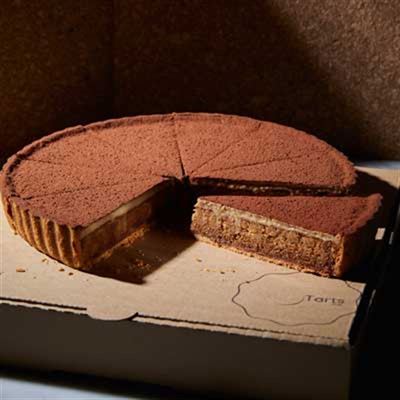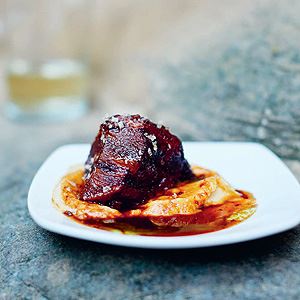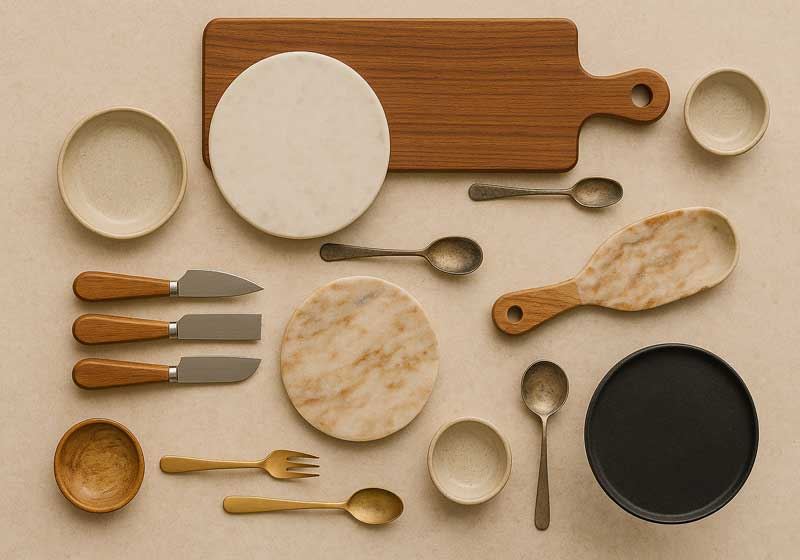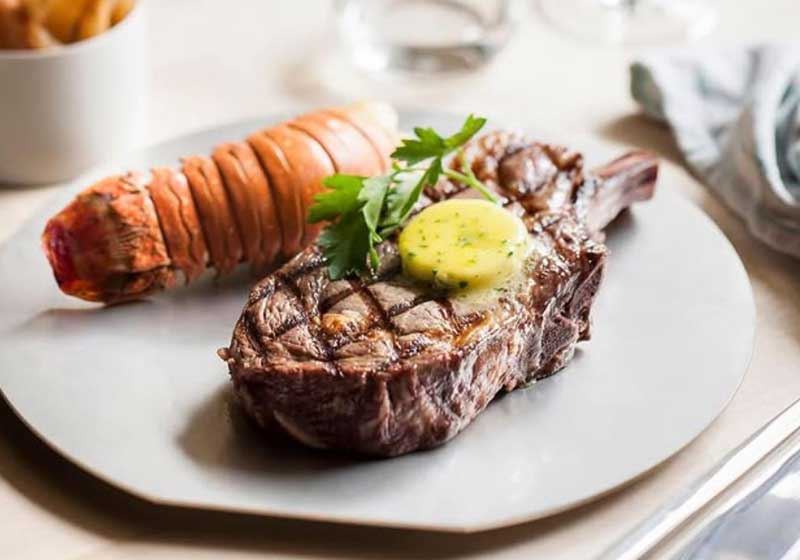Tiramisu Tart - Recipe by Gareth Whitton and Catherine Way
6

Ingredients
1 × baked shortcrust pastry shell (page 23)
Cocoa powder, for dusting
Hazelnut praline:
80 g hazelnuts
80 g caster (superfine) sugar
Hazelnut cake batter:
50 g hazelnut meal
45 g plain (all-purpose) flour
2 g salt
2 g baking powder
120 g golden caster sugar
110 g egg
55 g brown butter (page 111)
Marsala soak:
20 g Marsala
25 g caster (superfine) sugar
10 g espresso
80 g milk
40 g egg
60 g hazelnut praline
Tiramisu custard:
240 g pouring (whipping) cream
8 g coffee beans
50 g mascarpone
70 g golden caster sugar
100 g egg yolk
Method
Preheat the oven to 165 C.
Hazelnut praline:
Roast the hazelnuts on a baking tray (sheet) in the oven for approximately 15 minutes. Once they are a medium golden brown, remove them from the oven and set aside. If your hazelnuts still have skin on them, pour them onto a tea towel (dish towel) while they are still hot, gather the corners together, and roll them around inside the towel to loosen the skins. Then shake the nuts out of the towel to separate them from the skin.
Place a pot over a gentle heat and add the sugar. Continue to cook until the caramel becomes deep brown in colour, then add the warm hazelnuts. Stir this together to coat the nuts, then tip onto a tray to cool.
Hazelnut cake batter:
Weigh the dry ingredients, except the sugar, in a bowl and stir them together. Add the eggs and sugar to a separate mixing bowl. Either with a whisk or a stand mixer fitted with a whisk attachment, slowly combine until the sugar has dissolved. You do not want to incorporate any air at this stage, as it tends to separate when the butter is added and forms a foamy crust, so keep the speed low.
Melt the brown butter in a saucepan. You want this to be warm enough so that the liquid doesn’t cool down too quickly, but cool enough so that it doesn’t develop any burnt characteristics. If the butter is too hot, it can also fry the egg mixture as you add it, so a thermometer is useful (we aim for roughly 100 C).
Once the butter comes up to temperature, slowly pour it into the egg and sugar mixture (or add little by little, if whisking by hand). Ensure that the mixture is well emulsified, as this will prevent the butter from bleeding out later, giving the cake a greasy texture. Then mix in the dry ingredients, making sure that there are no lumps suspended throughout the batter.
First bake:
Pour 400 g of batter into the pastry shell. Place the tart into the oven to bake for approximately 15 minutes, or until the crust is an even colour and the centre of the tart is firm. Remove from the oven and allow to cool inside the tin. Use a pastry docker or a fork and poke small holes in the cake while still warm. Leave to cool.
Marsala soak:
Bring the Marsala, sugar, espresso and milk to a simmer and add the eggs. Blend with a hand-held blender then weigh out and pour 120 g of the soak over the cake while still warm. Take 60 g of hazelnut praline and spread an even layer over the top of the soaked cake, then set aside while you prepare the custard.
Tiramisu custard:
Place the cream, coffee beans, mascarpone and sugar in a saucepan and bring to a simmer, then remove immediately. To temper the egg yolks, add them to a mixing bowl and whisk in a small amount of the hot cream mixture until well incorporated.
Add the remaining cream mixture and use a hand-held blender to blend until the mixture is shiny and smooth – to prevent any air from being incorporated into the mix, keep the head of the blender underneath the surface. Strain into a jug to use straight away – you want to keep the custard as warm as possible to ensure the mixture cooks evenly in the oven.
Second bake:
Place the prepared tart into the oven, then pour the custard over top of the praline layer. Bake for 30 minutes, or until the custard just slightly wobbles in the centre, then remove from the oven and allow to cool.
Once the custard has completely cooled, remove the tart from the tin and portion into slices with a hot, sharp knife. To finish, dust each slice with a fine layer of cocoa powder on top.

Photo Credits: Photography: © Armelle Habib 2024








